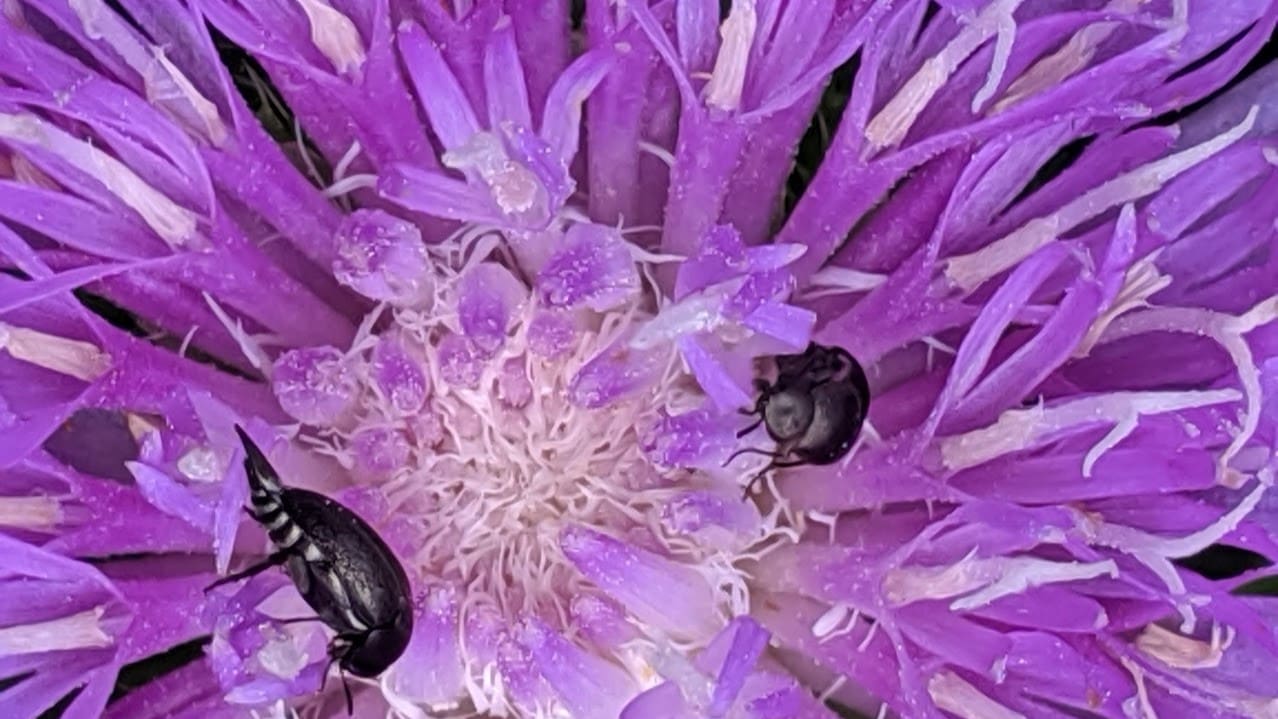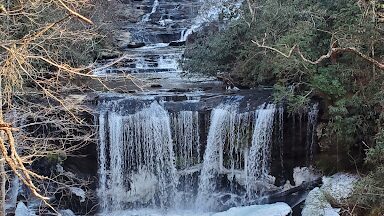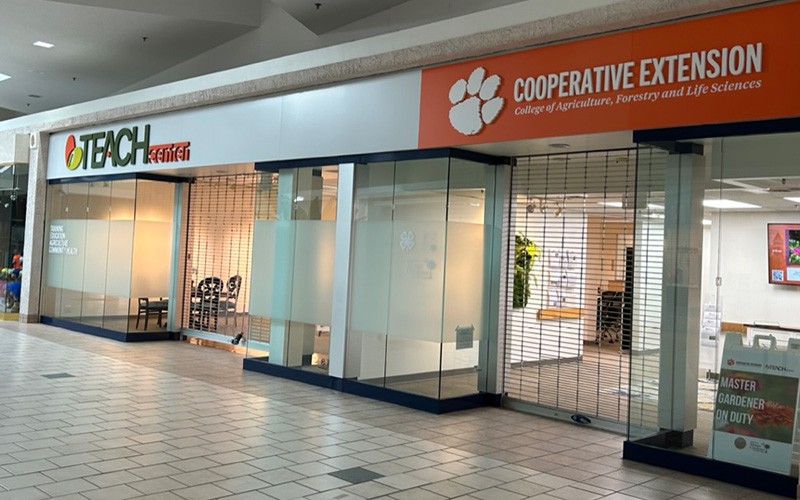by Sue Watts
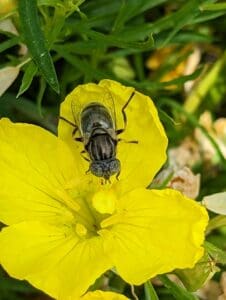
Photo Credit: Sue Watts
Imagine, if you will, on a warm summer day you are sitting in your pollinator garden which is thriving with carefully chosen native plants. As you watch, butterflies flit from blossom to blossom sipping sweet nectar. You can hear bumblebees buzzing in the background. The unsung heroes of pollination are also here: flies and beetles. Although their work is rarely acknowledged, after bees, flies are the second most important pollinators. Beetles were the first pollinators on the evolutionary scale, look carefully and you will see them hard at work too. In your garden, hummingbirds might stop to refuel every few minutes and then argue furiously in the treeline. This garden of life does not have to be big. Even a few containers of native plants can support a diversity of pollinators and significantly enrich biodiversity.
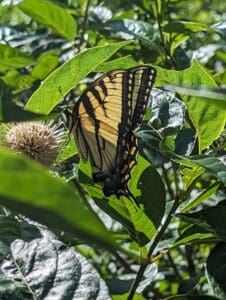
Photo Credit: Sue Watts
But why should we create pollinator gardens? Pollinators, particularly insect pollinators, are critical to the survival of plants we rely on for food and other services. But insects are under tremendous threat from habitat fragmentation and loss, changing climate, extensive pesticide use and the spread of disease through already weakened populations. This has led some scientists to call this time in history an “insect apocalypse.”[1] However, gardeners can help slow and perhaps halt this dramatic decline by moving away from a near monoculture (of extensive lawn with a selection of non-native shrubs) to a diversity of native plants. Also, by encouraging and supporting insect pollinators, we are ensuring a broader ecological biodiversity. Just think, 96% of our terrestrial birds rely on soft-bodied caterpillars to raise their chicks. Your pollinator garden, filled with nectar plants and butterfly host plants, can contribute to filling our skies with bird song and flight. Truly a valuable mission to pursue.
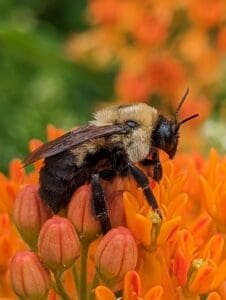
Photo Credit: Sue Watts
A pollinator gardener needs to change their gardening habits to support pollinators and a broader ecological diversity. Pesticide use must be reduced or eliminated since it affects pests and pollinators alike. When diversity is embraced, a balance is instituted and pest control from insects, birds and other animals replaces pesticides. Gardeners must also become more attuned to the needs of wildlife. For example, since 70% of our native bees live in the soil, leaving a bare patch of ground for their use will help them thrive. Leaving stems, rotting wood and brush piles will provide habitat for the rest who are cavity-nesting bees. Small actions like these can wrought big positive changes in the environment.
There are many sources of information about how to start a pollinator garden from many different organizations (see links below). Of all the advice out there, I think my best advice is to start with what you can easily manage. It might be a container or an acre or more but make a start! Every small action can fuel a wonderful reaction! Visit your local native plant society sales or nurseries to find healthy appropriate plants for your landscape. Our upcoming SCNPS Plant Sale on April 12th is a great opportunity to get high-quality native plants selected for our region—don’t miss it!
A how to guide:
Some native plant lists for the South-East Region from organizations that have a wealth of pollinator information:
- https://xerces.org/sites/default/files/publications/22-029_01_NPPBI%E2%80%94Southeast_web.pdf
- https://pollinator.org/PDFs/Guides/CentralAppalachianrx7FINAL.pdf
- https://pollinator.org/PDFs/Guides/SoutheastMixedForestrx5FINAL.pdf
- https://www.pollinator.org/pollinator.org/assets/generalFiles/pollinator-garden-cards_SouthEast2.pdf
- https://www.homegrownnationalpark.org/wp-content/uploads/2023/04/HNP-CONTAINER-GDN-L.2_8.3s.pdf
- https://homegrownnationalpark.org/wp-content/uploads/2023/11/HNP-ECO-REG-8.3-TREES-SHRUBS-LIST.110323.pdf
Sources

